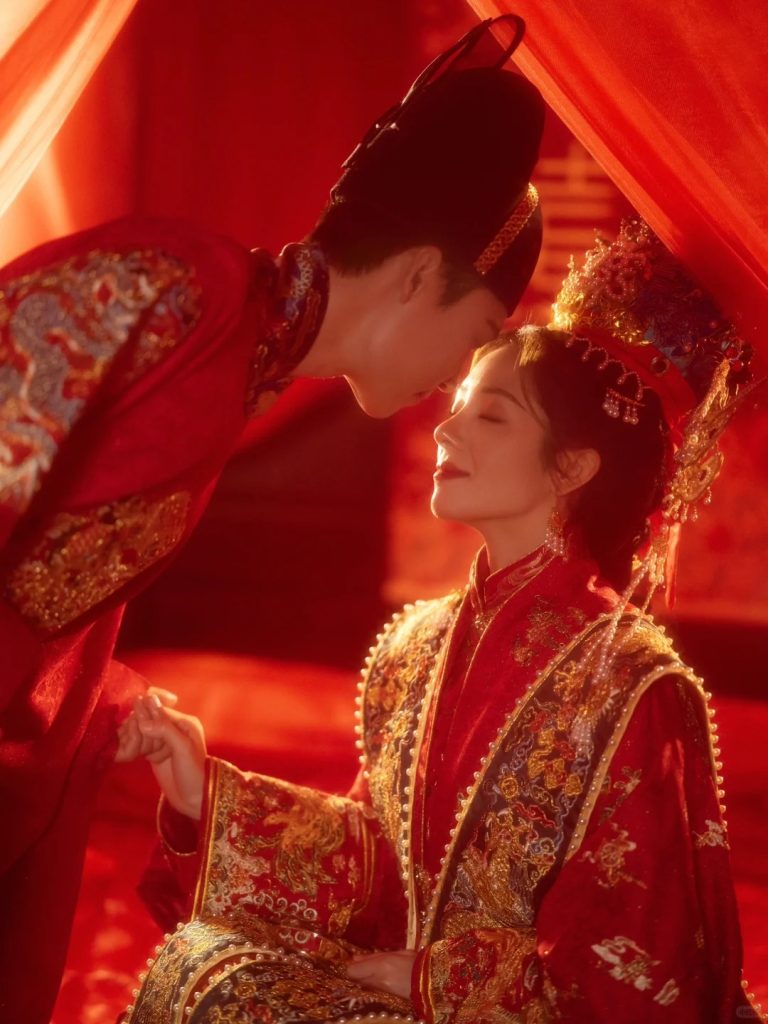Hanfu and the Status of Ancient Women: The Freedom Code in Sleeves

Look at the Sleeves, Read History
Have you noticed that the sleeves of women in costume dramas are sometimes wide and sometimes narrow? This is not a random design! From the Pre-Qin Dynasty to the Ming and Qing Dynasties, the changes in women’s sleeves are like a code book, hiding the secrets of their changing status. Behind the tight sleeves are the hands working, and the wide sleeves may hide the ambition of rebellion. Let’s unlock these “sleeve codes” and see how ancient women used clothes to fight for freedom.
The era of tight sleeves: tied hands (Pre-Qin-Han Dynasty)
1. Sleeves for work
Imagine the mulberry pickers in the Warring States Period: their sleeves are close to their wrists, similar to modern sports wrist guards. The actual clothes unearthed in Hubei 2,400 years ago have cuffs as thick as a mineral water bottle. This design is very practical – narrow sleeves are convenient for weaving, cooking, and farm work, but they also tie women firmly to household chores.

2. Moral tights
The Han Dynasty listed “being able to weave” as a standard for a good wife, and narrow sleeves became a “virtuous certification label”. Just like the workplace now requires women to wear high heels, in ancient times, tight sleeves were used to remind women: “Your stage is only between the stove and the loom.”
Wide sleeve revolution: quietly letting go of yourself (Wei, Jin and Tang Dynasty)
1. Hiding poems in sleeves
The noble ladies of the Eastern Jin Dynasty suddenly became popular with “oversized sleeves”, which could be used as small tents when unfolded. This is not for the sake of beauty – wide sleeves can hide poems, sachets and even love letters! At that time, the talented woman Xie Daoyun used such sleeves to hold poems and talk about philosophy with men, just like the ancient version of “ladies’ backpacks”.

2. Tang Dynasty Women’s Group
Look at the Tang Dynasty “Hairpin Ladies Picture”, the sleeves of the ladies are so big that they can go for a ride. During this period, women could ride horses and play polo, and the wider the sleeves, the more noble they looked. Just like the custom-made suits of female presidents today, wide sleeves have become a “visual medal” of women’s status.
The tug of war in sleeves (Song-Ming Dynasty)
1. The curse of Neo-Confucianism
The Song Dynasty began to force women to wear “small sleeves”: official regulations stipulated that sleeves should not exceed 15 cm (approximately the length of a mobile phone), emphasizing that women should be modest. But the teahouse owners in “Along the River During the Qingming Festival” still rolled up their sleeves to do business – rules are dead, but people are alive.
2. Rebellious cuffs
Pan Jinlian in the Ming Dynasty novel “Jin Ping Mei” wore tight sleeves today to look well-behaved, and changed to wide sleeves for a private meeting tomorrow. The singers on the Qinhuai River were even more amazing, making their sleeves as exaggerated as costumes, using stage costumes to protest against the constraints of reality. This is like modern girls changing into hot girl outfits on weekends and temporarily getting rid of their workplace suits.
The modern version of the “sleeve revolution”
1. Narrow sleeves become battle robes
At the Xi’an Hanfu Festival, girls wore tight sleeves to practice martial arts, turning the ancient “housework sleeves” into powerful weapons. The number of views of the topic “Hanfu Kung Fu” on a certain video website has exceeded 100 million, and the comments section is saying: “It turns out that narrow sleeves are so cool!”

2. Men and women exchange sleeves
At the London Hanfu Exhibition, men walked the runway in long gowns with female wide sleeves, and women turned men’s arrow sleeves into fashion items. Just like modern couples swapping coats, these “mixed sleeves” are breaking gender labels.
You decide your sleeves
Next time you wear Hanfu, think about it: choose narrow sleeves or wide sleeves? This is not only an aesthetic choice, but also a gesture of paying tribute to the ancients. Two thousand years ago, women used the size of their sleeves to gain space, and today we are also using clothes to express our attitudes – after all, true freedom of dress is never just about clothes.





Responses